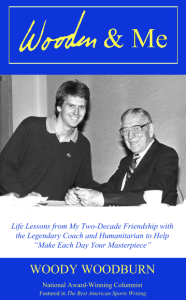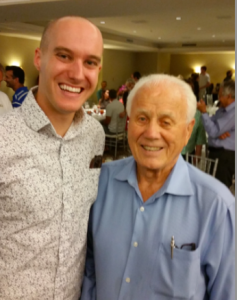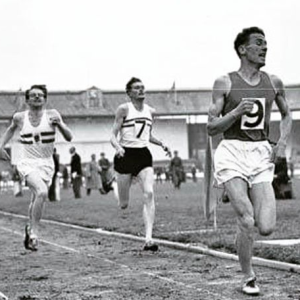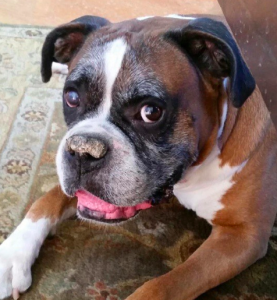My new memoir WOODEN & ME is available here at Amazon
* * *
Some thoughts, both Fair and foul
Fair warning: some of these thoughts and observations may make your head spin like a ride on the Twirl-A-Whirl . . .
*
Nobody asked me, but one of the very best things about the Ventura County Fair, which runs through Aug. 16, is the Ventura County Star’s intrepid writer – and George Plimpton-like “participatory” journalist – Tom Kisken sharing his A-to-Z fairground experiences.
*
This year’s theme, “A County Fair With Ocean Air,” would not have been fitting the year one of Kisken’s experiences was cleaning out a Porta Potty.
*
We have bus stations and train stations, as well as gas stations, so why aren’t airports instead called “plane stations”?
Or else why not “busports” and “trainports” to go with carports (a covered open-air garage) and seaports? Just wondering.
*
Overrated: Fair rides, except for the Ferris wheel and merry-go-round.
Underrated: Fair photography and craft exhibits.
*
The view from the London Eye on the bank of the River Thames takes the backseat to the panoramic vision from atop the Ventura County Fair’s giant Ferris wheel along the beach of the Pacific Ocean. Just saying.
*
Just asking: Who gets more depressed by the back-to-school TV commercials and print ads – kids enjoying their summer break or teachers?
*
I wonder what Kisken’s cholesterol levels are before the Fair and right after his 12-day binge on Everything Bacon, Fried, And Chocolate?
*
Love this wisdom from the Dalai Lama, which applies to summer as well as the school year, weekends as well as workdays: “There are only two days in the year that nothing can be done. One is called yesterday and the other is called tomorrow. Today is the right day.”
*
More inspiration, from his holiness James Bond: “I don’t stop when I am tired, I stop when I am done.”
Sounds like Kisken around Day 007 of the Fair.
*
According to the American Academy of Pediatrics, the average 8- to 10-year-old spends nearly eight hours dialy on TV, video games, computers and smartphones. For older children and teenagers it tops 11 hours a day.
Experts contend that excessive screen time can have significant negative effects on behavior, school performance and health . . .
. . . and also on 3-point shooting!
Matt Bonner, a sharpshooter for the San Antonio Spurs, had his worst season from 3-point range last season and recently explained why: tennis elbow – aka cellphone-itis.
“When the new iPhone came out it was way bigger than the last one,” Bonner said. “And I think because I got that new phone it was a strain to use it, you have to stretch further to hit the buttons, and I honestly think that’s how I ended up developing it.”
Reaction I: Parents should take notice.
Reaction II: The Lakers should send Stephen Curry and Chris Paul each a new iPhone.
*
Speaking of children, my much-better-half – either mistakenly or perhaps on purpose because she often says I act like a 10-year-old – bought me adult multivitamins that are “Gummies” instead of tablets.
Initial reaction: Seriously?
Second reaction: Seriously yummy!
Final thought: I wish “Gummies” vitamins had been around when I was 10.
*
More food for thought: Kudos to local chef Tim Kilcoyne and his Ventura-based food truck Scratch – as well as McGrath Family Farm of Camarillo and Tamai Family Farms of Oxnard that provided produce – for helping feed 5,000 athletes and guests at the recent Special Olympics World Games in Los Angeles.
I have no connection to Kilcoyne – although, full disclosure, I might harbor a hidden agenda in dreaming of one day having a food truck or restaurant name a sandwich of my design “The Woody” – but his burgers are second to none and signature “Scratch Ketchup” is the best I’ve ever tasted.
*
“A County Fair With Ocean Air” didn’t ask me, but it should add a healthy item to its menu this year. I’m thinking a “Gummies” multivitamin wrapped in bacon, stuffed inside a deep-fried Twinkie and then covered with chocolate.
I bet Tom Kisken would try it.
* * *
Woody Woodburn writes a weekly column for The Ventura County Star and can be contacted at WoodyWriter@gmail.com.
 Check out my new memoir WOODEN & ME: Life Lessons from My Two-Decade Friendship with the Legendary Coach and Humanitarian to Help “Make Each Day Your Masterpiece”
Check out my new memoir WOODEN & ME: Life Lessons from My Two-Decade Friendship with the Legendary Coach and Humanitarian to Help “Make Each Day Your Masterpiece”
- Personalized signed copies are available at WoodyWoodburn.com
- Unsigned paperbacks or Kindle ebook can be purchased here at Amazon









